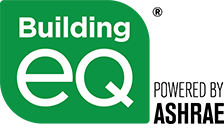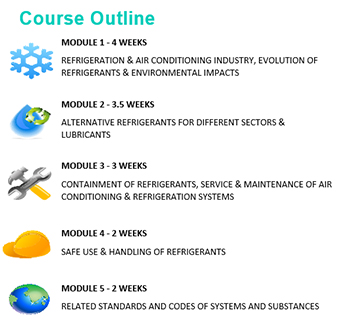New ASHRAE Course: Benchmarking and Assessment of Building Energy Performance

ASHRAE has developed a new university course on building energy auditing and analysis using the ASHRAE Building EQ rating system as a learning framework. Unlike other ASHRAE educational products that focus on continuing education of industry professionals, this course is designed as a traditional three-credit college course for upper-level undergraduate or graduate students. It seeks to offer a project-based learning experience through hands-on engineering in real buildings under the guidance of both academic instructors and industry professionals.
The course involves ten weeks of classroom instruction followed by five weeks of hands-on field work in teams under the guidance of local industry mentors. The course is intended to revolve around a representative campus or community building for each student team that will provide the focus for the underlying technologies and techniques and the practical field studies.
The course is intended to be a partnership between local ASHRAE organizations and an academic department and instructor. Through its local chapters and student branches, ASHRAE can provide professional mentors for student teams as well as a potential co-instructor with extensive domain knowledge for the course. The academic institution is expected to host the course within its normal offerings and promote the course as a project-based learning experience. Buildings for energy auditing could be provided through the institution’s Facilities Management organization or could be drawn from local community facilities (e.g., homeless shelters, public housing, food banks).
It is expected that the students will have previous coursework in both thermal sciences (or building physics) and building mechanical/electrical systems. Potential students could be in engineering, engineering technology, architecture, construction management, or environmental studies.
Course content is available by clicking the button below. Access to sample course material in PDF format requires a simple registration, while access to all material in native format requires agreement to licensing terms. The following documents offer introductory information:
 One-page course description
One-page course description
 Sample syllabus (Updated June 2017)
Sample syllabus (Updated June 2017)
 Course outline with learning objectives (Updated 2017)
Course outline with learning objectives (Updated 2017)
Course content is offered free of charge, though students will be expected to purchase some resources through ASHRAE with student discounts.
REGISTER FOR COURSE MATERIALS
For more information, please email BuildingEQ@ashrae.org.
Walid Chakroun, a Professor from Kuwait University, who also serves on the ASHRAE Epidemic Task Force, developed a presentation covering COVID-19 from an Indoor Air Quality Perspective. The free university lecture can be used by professors, students and ASHRAE Student Branch Advisors.
Free Refrigerant Management for Future Engineers Course

ASHRAE has been chosen to distribute a university level course developed by UN Environment on Refrigerant Management for engineering students.
There is no cost to access the course and use the course materials. Instructors are provided with lecture notes, activity sheets, and course presentations.
Over the last two decades UN Environment has been involved in training programs offered to field engineers and service technicians on refrigeration good practices including emissions reduction with a focus on hands-on practices.
This new course is first of its kind by UN Environment to offer comprehensive scientific information at the academic level. Future engineers will be offered the skills required to manage refrigerants soundly, as well as, technical and policy aspects associated with the refrigeration and air-conditioning industry.
UN Environment is especially interested in encouraging instruction of the course in developing countries.
Click the REGISTER button to request sample course materials. After your review of sample course materials and approval of use, return to the REGISTER button to download complete course materials.
REGISTER
For questions about the UNEP University course, contact Steve Comstock at comstock@ashrae.org